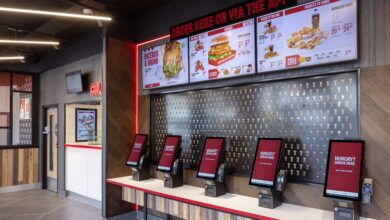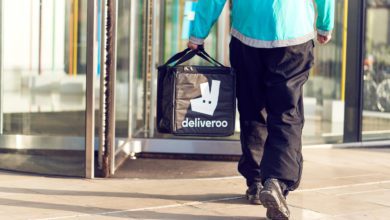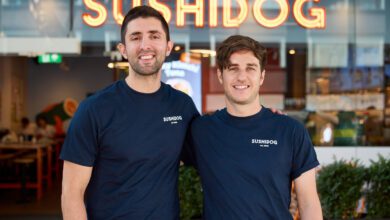What the DoorDash Deliveroo takeover means for the food delivery sector
With DoorDash acquiring Deliveroo, the UK’s food delivery market is entering a new phase of consolidation, innovation, and competition. Catering Today has spoken with analysts and industry insiders to uncover what the deal means for restaurants, caterers, and the broader delivery ecosystem

The food delivery sector in the UK is undergoing a seismic shift. DoorDash, the American delivery giant, has recently announced its acquisition of Deliveroo, one of the UK’s leading food delivery platforms. The move is set to reshape the competitive landscape of food and grocery delivery across the country and spark debate about the future of catering partnerships, delivery economics, and innovation.
As food delivery services have become integral to the operations of restaurants, caterers, and consumers, the impact of this merger raises crucial questions about market consolidation, competition, and future innovation.
With a combined platform now poised to dominate a significant portion of the food delivery market, the future of smaller competitors and independent businesses is uncertain. At the same time, other key players such as Just Eat and Uber Eats also continue to expand their market share and technological capabilities. So what will these changes bring to the industry?
Strategic expansion
At its core, the acquisition is a strategic expansion for DoorDash, aiming to consolidate and scale operations in a maturing European market. As Jonathan Simmons, partner at L.E.K. Consulting, explains: “DoorDash was looking to buy an attractive position in a growing food and grocery delivery market. Over the years, Deliveroo has built a strong position in the UK but struggled to grow overseas particularly those where gig economy economics are less favourable.”
“DoorDash was looking for overseas growth and Deliveroo makes an attractive entry point into its expansion markets,” he says. “Moreover, with Deliveroo’s existing partnerships with grocery retailers, these will align with DoorDash’s increasing focus on grocery deliveries.”
From an industry-wide perspective, this is not an isolated transaction.“The main trend has been exiting or acquisition of weaker companies (e.g. Just Eat by Delivery Hero given strategic mistakes such as purchase of GrubHub, exit of Getir/Gorillas),” Simmons continues. “However, strong national companies such as Deliveroo are attractive to give a market entry to expanding companies and to leverage economies of scale in areas such as tech development and marketing expertise.”
Mixed impact on catering businesses
For catering businesses, restaurants, and foodservice providers, the implications are multifaceted.
James Lei, chief operating officer at ooShirts, highlights the expected impact on competition. According to Lei, the merger is likely to result in a more consolidated market for restaurants and caterers, “intensifying” the competition among delivery services. He says: “While DoorDash’s entry into the UK market brings fresh capital and potential innovation, it could also force smaller players to adapt or lose market share to the combined might of these two giants.”
“In terms of competition, DoorDash and Deliveroo will likely strengthen their hold on the market, pushing other services like Uber Eats to ramp up their offerings,” Lei adds. “Smaller, independent delivery companies may struggle to keep pace, which could lead to more acquisitions or partnerships in the near future. For consumers, this could mean fewer options, but potentially more competitive pricing as the larger companies leverage economies of scale.”
Simmons is more optimistic about the merger’s near-term impact on restaurants and caterers. “As each market is inherently local (so there are really no UK based restaurant groups which are global) then DoorDash/Deliveroo cannot apply any particular leverage in a negative way. Benefits will undoubtedly be in securing Deliveroo’s future and ensuring it has the firepower to continue to expand in the UK,” he says.
Innovation through technology and data
Both experts agree that the acquisition is likely to fuel innovation in logistics and technology – a core value proposition for DoorDash. Simmons notes that the sharing of knowledge in delivery efficiency, including machine learning tools, and potentially expansion of Q-commerce capabilities will be leveraged, as well as DoorDash’s retail media experience, as this market has less traction in the UK compared to the US.
This innovation focus aligns with Lei’s view on where the industry is heading. He says: “In terms of innovation, we’re likely to see an even greater emphasis on data-driven insights to improve delivery logistics, customer targeting, and service. This could lead to a shift in how catering businesses manage their operations, with a stronger focus on speed, quality control, and delivery optimisation.”
The ripple effects of the acquisition are expected to influence how restaurants and caterers assess their relationships with delivery platforms. According to Lei, the impact for caterers could be mixed. He suggested that while DoorDash’s advanced technology and large user base might open up new opportunities for reaching customers via a broader delivery network, the merger could also heighten pressure on partners to meet growing expectations around speed and service quality.
With DoorDash becoming a major player in the UK, businesses may need to reconsider their current partnerships – possibly leaning toward exclusivity agreements with the newly combined platform or diversifying their delivery strategies to avoid overreliance on a single provider.
Lei also points out that catering operators will need to strike a careful balance between leveraging opportunity and avoiding dependency. As digital marketing and logistics tools continue to evolve, the influence of dominant platforms is likely to grow, raising the risks of relying too heavily on any one channel. He notes that catering businesses would benefit by staying nimble, pursuing new partnerships, and embracing emerging technologies to stay competitive.
At the same time, they will face challenges including rising commission fees, stronger competition, and the need to meet increasingly sophisticated consumer demands – all of which will require a more strategic approach to managing delivery operations.
Looking more broadly, Simmons points out that differences in platform models will shape how competitors respond. “Just Eat now has the strength of scale and financial backing after its acquisition by Delivery Hero,” he says. “The business models are also different – Just Eat is a marketplace for demand, with delivery being fulfilled by the restaurant. Deliveroo is an integrated platform, providing delivery as well. This means that Deliveroo and Uber Eats are better placed to diversify into other delivery segments like grocery.”
“However, there are still a significant number of other players in the market, either regional or targeted competitors such as HungryPanda or Scoffable, or value focussed players such as Foodhub, and hence more consolidation can be expected,” Simmons notes.
Long-term implications
As for the long-term outlook on innovation, Simmons believes the momentum won’t slow. “Investments in these areas will continue, particularly on the key value drivers of customer acquisition and marketing effectiveness, and delivery efficiency. The scale and financial stability of the new owners of Just Eat and Deliveroo is likely to allow continued investments. This will deliver continued growth, providing benefits to restaurants in terms of being an additional channel for them.
“The main question is to what extent is this cannibalising in-restaurant eating, but the evidence is unclear,” he adds.
With DoorDash set to deepen its footprint in the UK via Deliveroo, one thing is certain: the next era of food delivery will be defined by scale, speed, and data. Caterers and restaurateurs must remain agile, technologically astute, and prepared to rethink their delivery strategies.
The merger may not signal the end of the road for UK-based food delivery startups or smaller regional players – but it certainly raises the bar. Whether that translates into new opportunities or new challenges for the catering sector will depend on how operators adapt to the evolving landscape.







